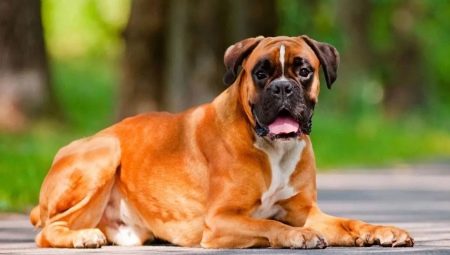Dogs are faithful companions and companions of man for several thousand years. Among them, boxers stand out for their unusual characteristics and are very popular. But before you start a pet, you should collect more information about him.
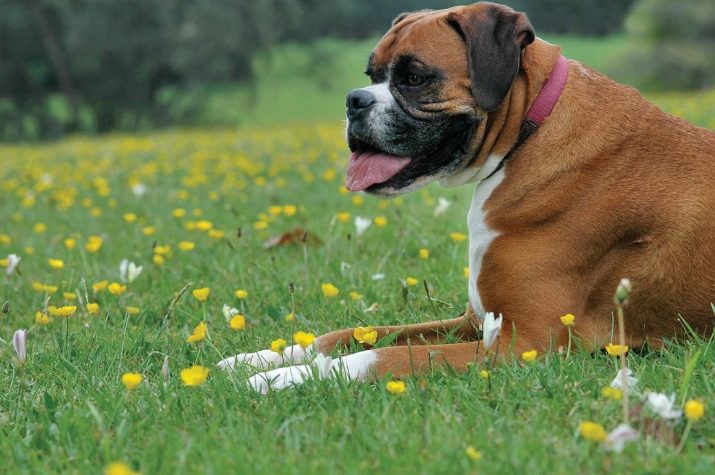
History
Regarding the farthest ancestors of the boxer, experts put forward two versions. According to one of them, these are ancient mastiffs used in ancient times. The ancient Greeks, based on dog-shaped dogs, bred the Molossian breed, which was used primarily for military purposes. Very quickly, Molossians began to grow in other parts of Europe. Another assumption is that dog-shaped dogs existed originally in the European North.
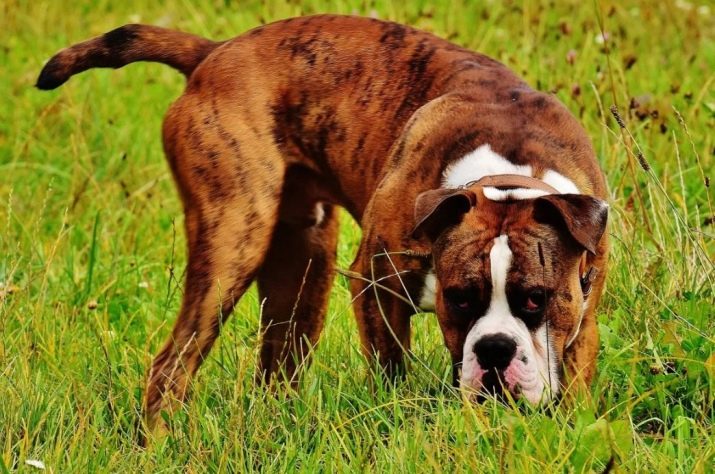
Advocates of this point of view also believe that English mastiffs came from these early dogs. And the mastiffs themselves have already been used in breeding a number of breeds in central Europe. This is how bullenbasers appeared (about them below). But overall the question is very confusing. It is unlikely that they will understand it well in the foreseeable future.
Actually Boxer breed was bred in Germany. For the first time at the exhibition these dogs were shown in 1895, and another 10 years were required to develop and approve the official standard. But keep in mind that the breed has a background that has not been documented. It is believed that the forerunners of boxers were Brabant bullenbeysery. They were found very widely almost throughout Europe in the XVII-XVIII centuries.

The name "bullenbeyser" literally means "biting a bull." Such dogs were used by hunters to hunt animals.Therefore, the main focus was on increasing aggressiveness, but strictly within the owner-controlled framework. The goal is quite obvious - the dog was supposed to attack the victim and hold it, and at the first signal of the owner to release. But in the XIX century, driven hunting with persecution gradually goes out of fashion, and legislative prohibitions on it soon appear.

Then a specific combination of the qualities of Bullenbeiser found a new application - they began to use it as a guard and watchman of herds. However, livestock owners were primarily interested in the practical qualities of animals. The purity of the breed ceased to be appreciated, and the bullenbeiser and the British bulldog began to cross actively. That is why current boxers have received a number of characteristic features.
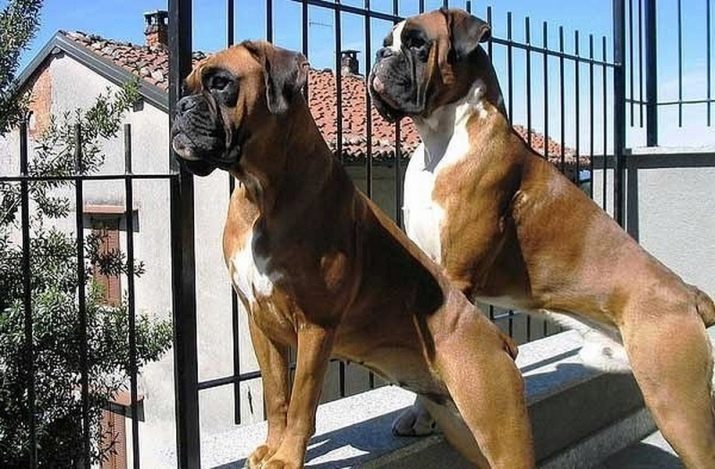
The problem, however, was the uncontrolled, unsystematic nature of the cross. The appearance of the dogs turned out to be extremely different, and the development of a common standard seemed almost impossible. Individuals met with:
- unusually long muzzle;
- unreasonably oblong body;
- the appearance of a classic bulldog (the differences turned out to be extremely insignificant).
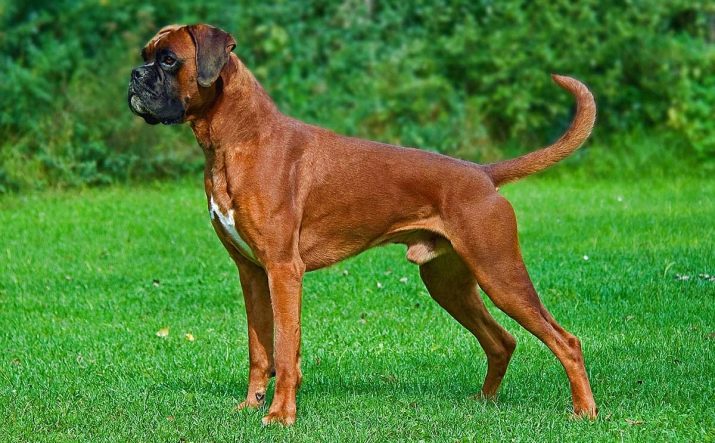
A huge contribution to the improvement and standardization of boxers was made by the Shtokman spouses. They initially came up with the ideal image of the breed and were able to realize their plan. The Shtokman along the way had to overcome a number of difficulties. They focused on reducing aggression and increasing animal contact. As a result, the very same boxers appeared that are familiar to modern breeders.
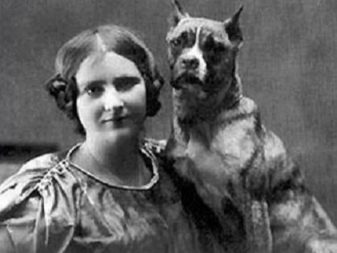
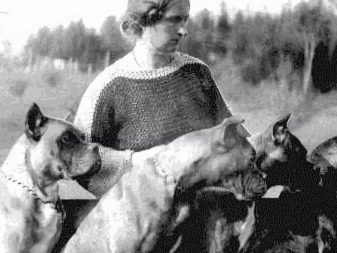
Returning to the very beginning of the formation of the breed, it must be pointed out that more or less close to the bullenbasers familiar to us, they had a solid red or tiger color. They could not have white spots. The dogs inherited from the Molos ancestors rather short muzzles. This anatomical feature made it possible to breathe even while holding prey (victim) with teeth. Already when the ancestors of the boxers were used for bullying on the hunt, they began to stop their tails and ears.
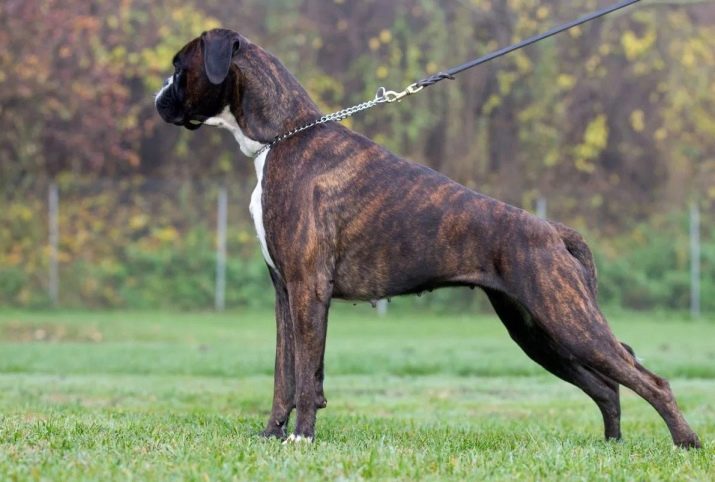
These places were considered too vulnerable to collisions with prey, especially with predators. It was common practice to wait in ambush until the hounds led the beast to the right place. True boxers in the past were considered those who had a deep furrow on their nose. Because of her, it sometimes seemed that the nose was divided into two parts. This was the case at the time when they began to work purposefully on the breed.
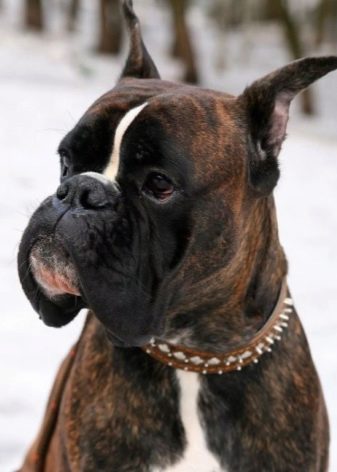
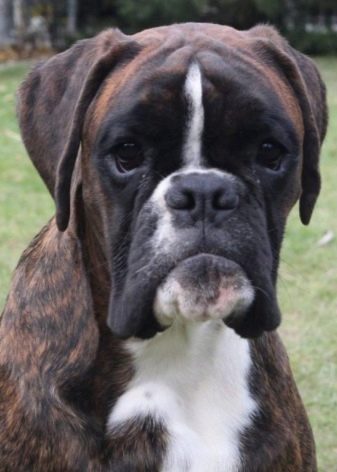
With all the merits of the old breeders and the Shtokman couple, one cannot fail to mention the contribution of Robert Fisher. It was this reputable trainer who took the first important step - he helped to overcome the distrust of bullenbasers. Initially, proposals to add it to the list of breeding breeds caused a storm of indignation among breeders. But Fisher actually showed that boxers are much better at carrying out the bulk of the tasks than generally recognized then dogs. He not only obtained permission for them to participate in the exhibition, but also supported the creation of a national club.
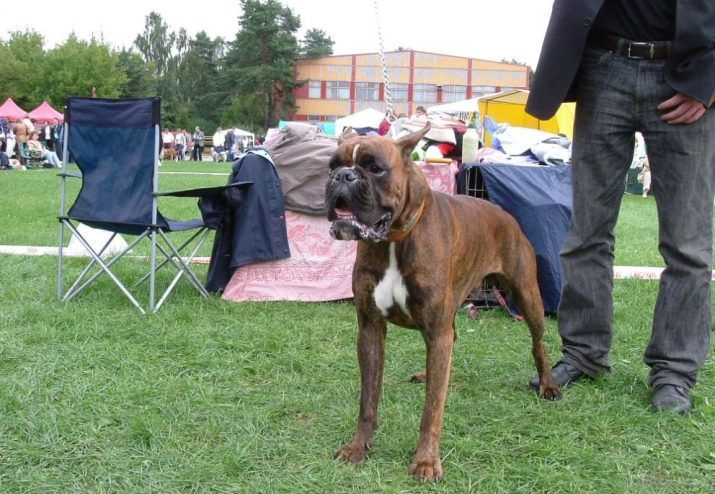
A year later, in 1896, 50 boxers, differing in color and other features, were delivered to the first all-German exhibition. During rapid development, the standard had to be redone and refined repeatedly. Initially, white boxers also entered it, but their inferiority was quickly discovered. Finally this variety of dogs was introduced into the studbook at the turn of the 19th and 20th centuries. Soon the breed gained extraordinary popularity.
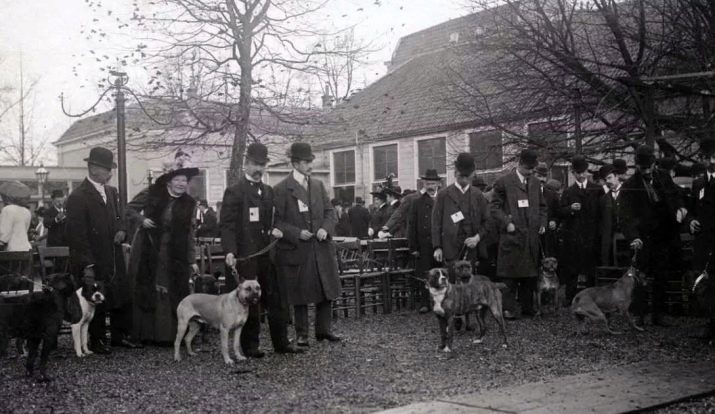
Breed characteristics
Dog handlers believe that in the strict sense a boxer dog has no varieties. However, there is a difference in color. Only red and tiger individuals may be shown at exhibitions. Red dogs have a light yellow or saturated brick color coat. There are also intermediate shades; black hair cannot be anywhere but the muzzle. Tiger color, of course, has clear stripes.
There are many subspecies of this color.Light dogs can have red hair, on which even looking at dark stripes is problematic. There are individuals with a more saturated dark part. Occasionally, it approaches black color and differs only in the presence of red "mottled".
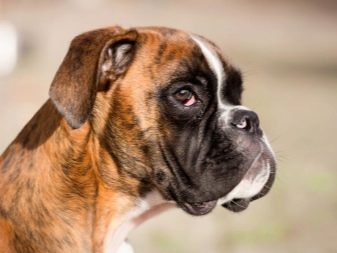
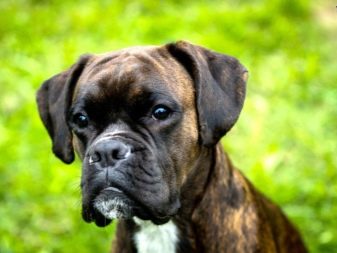
Important: according to the standard, there should be a clear contrast between the strips and the main part of the coat. The average bandwidth is considered normal. Both an unjustified narrowing, and their excessive expansion are recognized as a violation.
You can meet boxers of albinos - pure white dogs account for about ¼ of the breed. But such animals cannot participate in exhibitions, be used for selective breeding, and many of them are completely deaf. A classic German boxer lives an average of 10 to 13 years. The exact period in each case is determined by:
- perfection of the diet;
- general correctness of care;
- the speed of treatment of specific ailments.
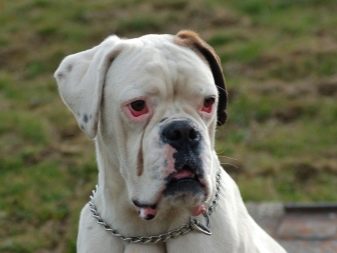
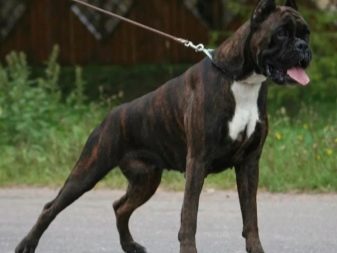
The breed is appreciated for its universal qualities. Its representatives:
- accompany small children;
- prove to be faithful companions;
- act as reliable guards;
- are loyal and reliable friends.
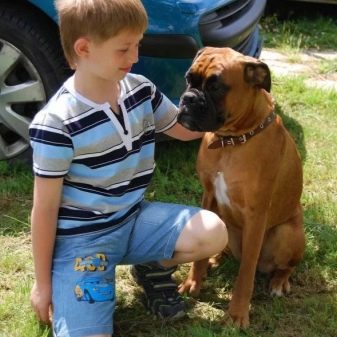
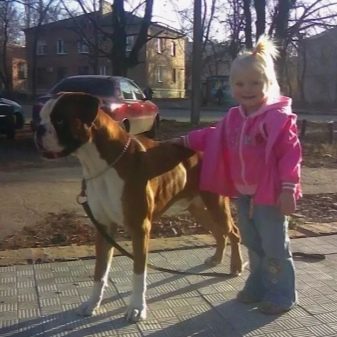
Good build, strength and physical endurance, persistent temperament allow the use of boxers in law enforcement and armed forces. Quite often you can meet the "German" accompanying blind people. The name of the breed is due to the fact that with hassles, dogs actively use their forepaws. In the descriptions, it is noted that the boxer has a smooth coat, is distinguished by muscularity and a stocky physique.
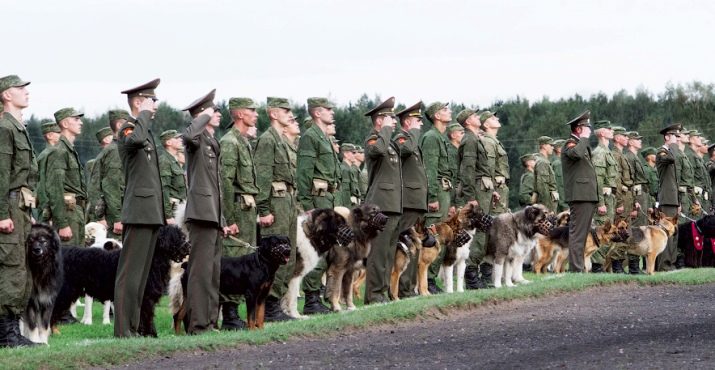
The weight of a boy-boxer reaches 27–35 kg, in the majority of “girls” it ranges from 25 to 27 kg and only in isolated cases exceeds 30 kg. Growth, respectively, will be from 0.57 to 0.64 cm and from 0.53 to 0.63 m. Spotted patches are allowed on:
- neck
- chest part;
- paws;
- muzzle.
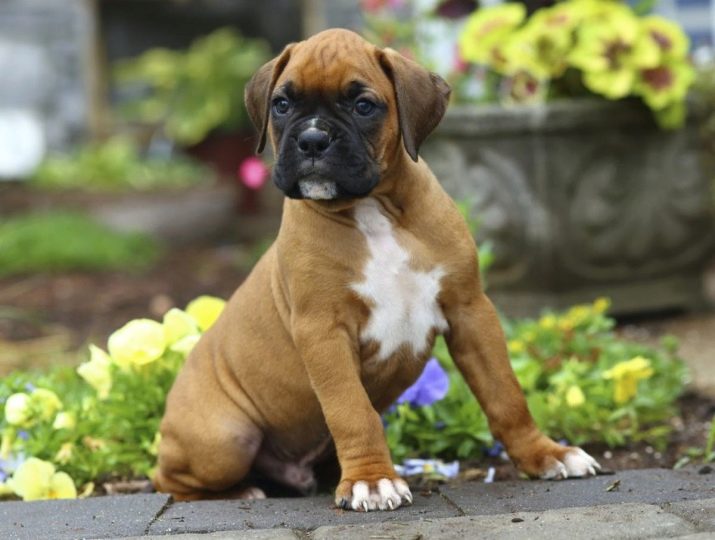
From the point of view of the standard, such spots are not a violation. However, members of the exhibition jury carefully check how the dog looks. Disqualification occurs automatically if white areas account for 1/3 of the background. The requirements of the standard include:
- a large number of muscles;
- slim legs;
- overall body strength.
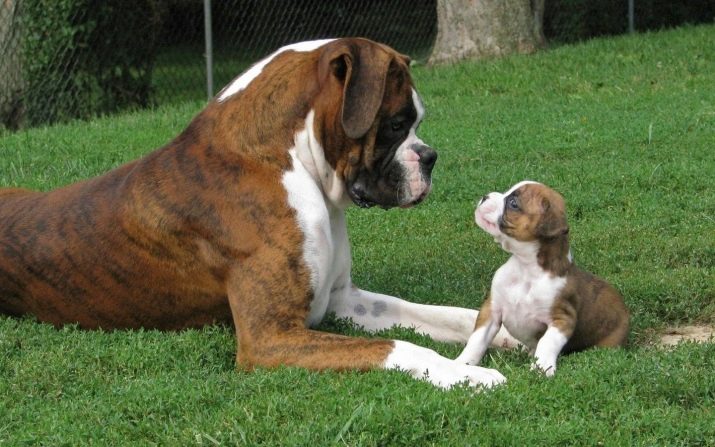
The exterior of the boxer includes a cubic-shaped head with a slight upper bulge. The dimensions of the head and body are proportional. The massive muzzle is decorated with a flattened, uplifted nose. As with bulldogs, the lower jaw is slightly advanced. The latter feature is especially evident when viewed from the side.
Boxers' cases are square in shape, they stand out clearly:
- straight back is relatively short;
- wide lower back, going downhill;
- deep chest;
- parallelism of the straight forelimbs;
- tight pressing of the elbows to the body;
- wide placement of the hind limbs;
- muscle of the hips;
- low tail landing;
- the location of the ears at the top of the skull.
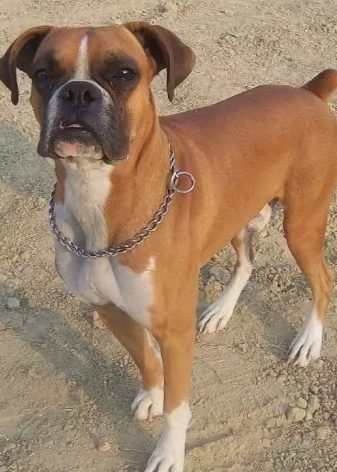
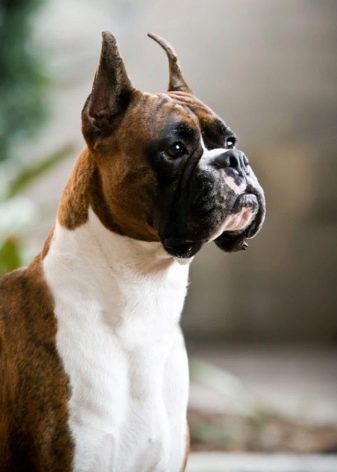
For a dog to be one of the best, it should also have medium-sized dark eyes and shiny coat. But, preparing to participate in the exhibition or caring for the acquisition of a truly purebred individual, we must remember that the standard is constantly updated. Back in 2001, stopping boxers was required. Now this procedure is prohibited in the EU, and outside it is left to the discretion of the owners.
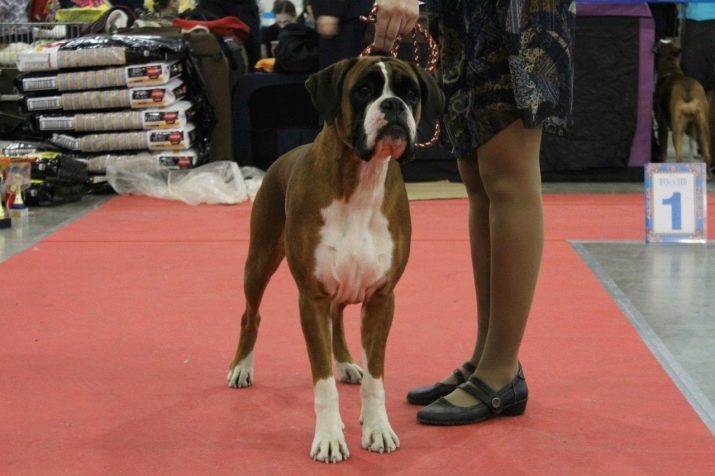
Often you can hear talk about the types of boxer: “German” and “American” branches. But this is not so simple. The American boxer took shape in the post-war period, when the military returning from the liberated territories brought a number of puppies to the United States. The breed quickly gained popularity and at some point was even the most popular in North America. The “Germans” differ only in their heavier weight and more massive head; according to the standard, they are recognized equivalent, and mestizos do not lose purebred.
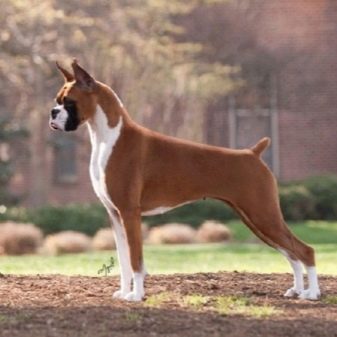
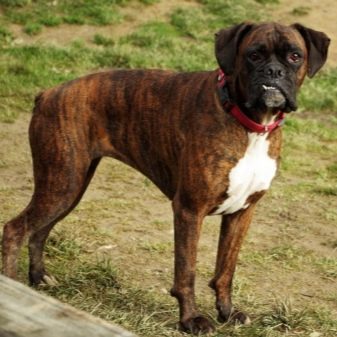
Boxers' fangs are well placed, they are visible only when the mouth is open.The same thing applies to language. The eyes are surrounded by a black stripe. The skin is elastic and has no folds. Shedding occurs with medium intensity. When the coat dies, it is not too noticeable.
If development is going right, then the mass should be:
- by 1 month 3.5 kg;
- 3 months from 11 to 12 kg;
- by the half-year age of 21 to 23.8 kg.
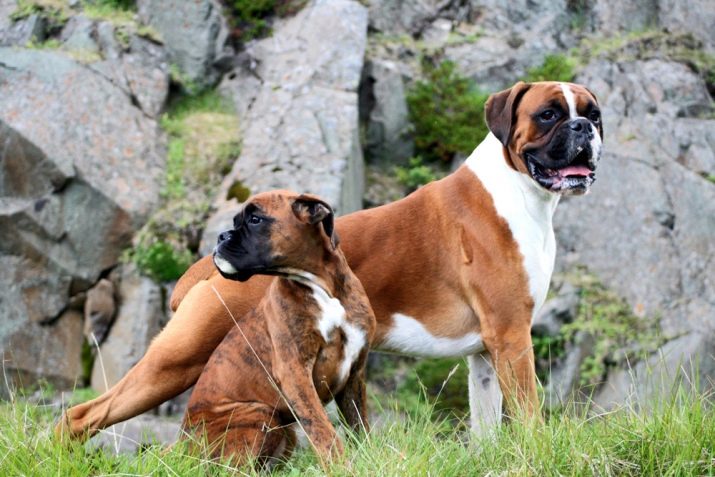
Features of breathing are inherited from one of the branches of the ancestors (English Bulldogs). Physiologically conditioned snoring and active salivation make it inappropriate for a dog to sleep in the owner’s bed. Yes, quite a few people even like these moments. And yet, on the hygienic side, they are hardly the norm. Important: the boxer howls very rarely, and almost always with such a sound he calls to the owners asking for help.
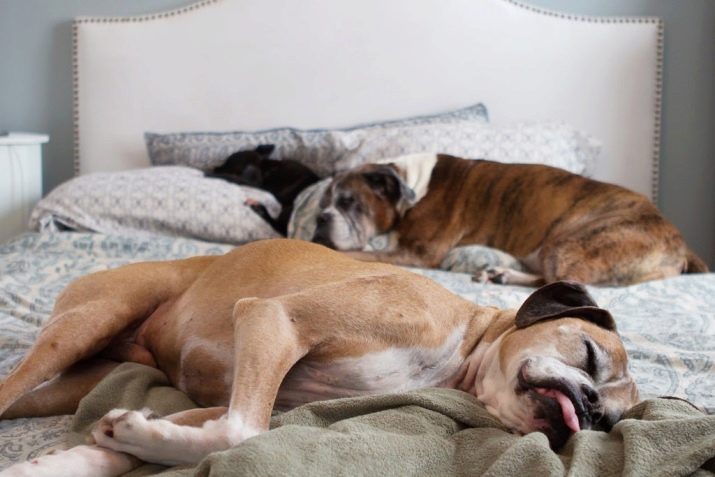
Mestizo
Along with maintaining a purebred livestock, some breeders conduct experiments on breed hybridization. All such individuals are distinguished by their boxer-specific color and elongated face. The most important purpose of mestizos is the use of their decorative qualities. Practical characteristics are paid much less attention. It is customary to highlight:
- bogle (a mixture of beagle, basset and boxer);
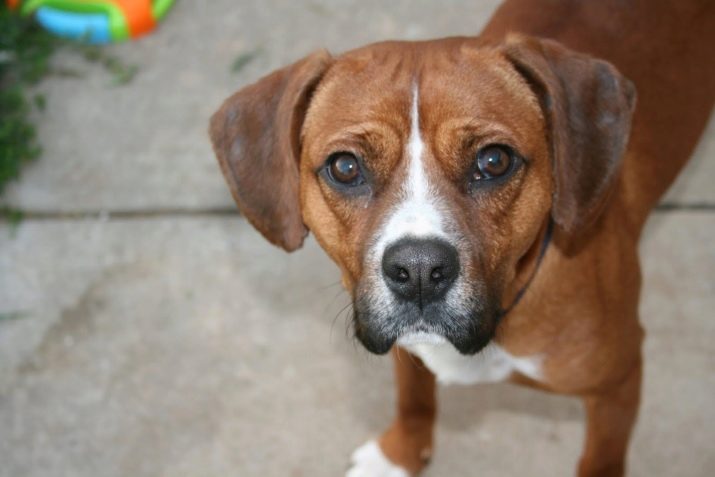
- bopey (hybrid with sharpei);
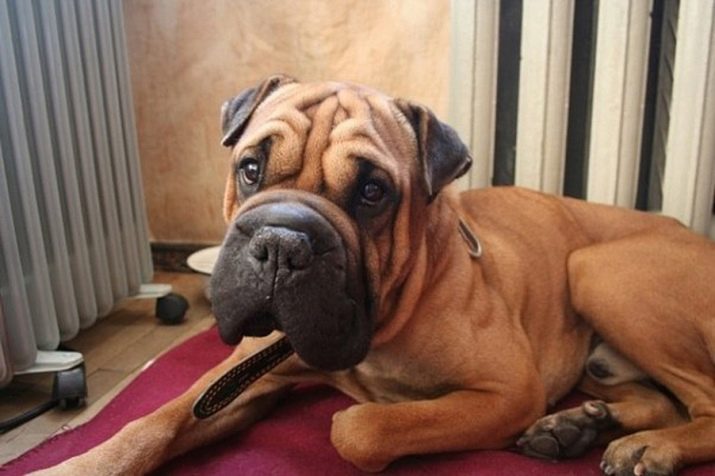
- boxerman (boxer + Doberman);
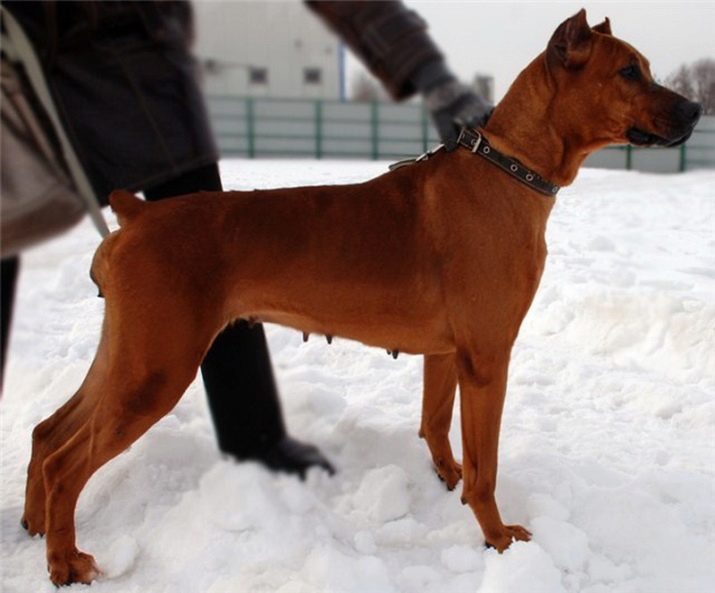
- boxweiler (boxer + rottweiler);

- bulldozer (French bulldog + boxer);
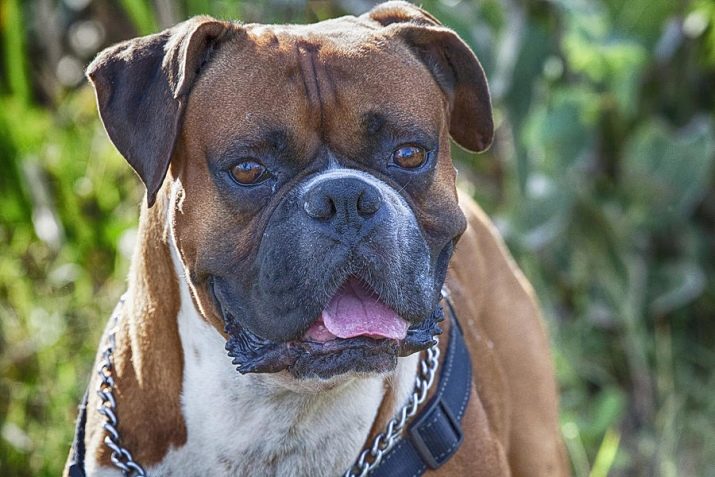
- bulbox (boxer + pit bull);
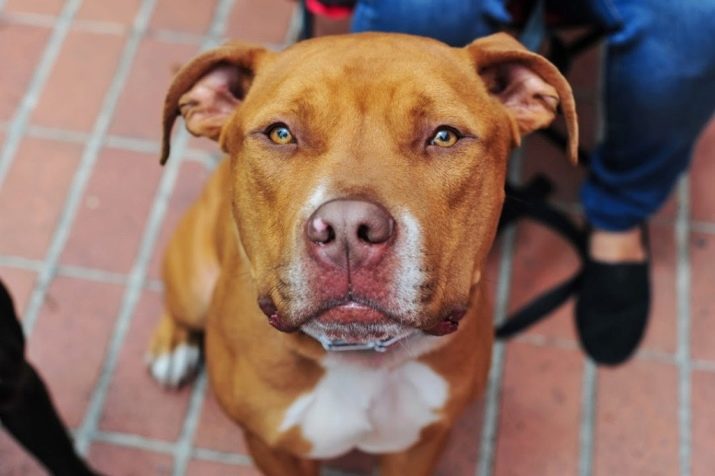
- bulboker staf (boxer + pit bull + stafford).
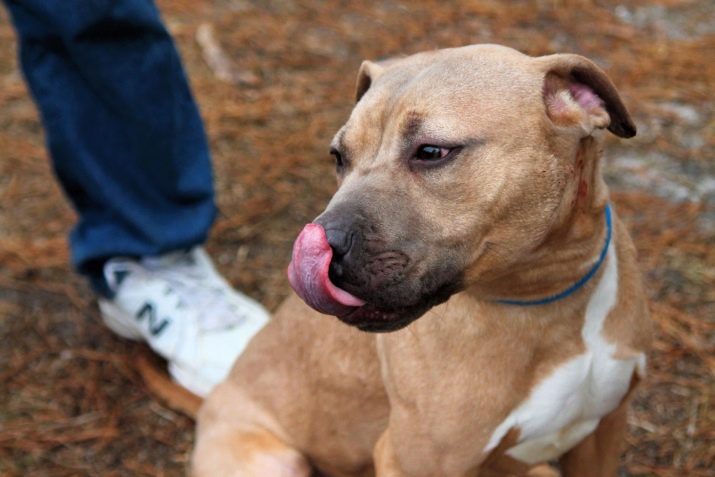
Character Features
Descriptions often mention that boxers:
- good;
- devotees;
- prove themselves as experienced guards;
- distinguished by highly developed intelligence.

All these qualities, of course, are characteristic of the breed. However, she also has negative aspects. It is undesirable to start boxers for those who are very busy or spend all their free time at home. These dogs are very active, and if you do not give energy to splash out on a walk, in the game, then behavior problems are inevitable. Fighting qualities of boxers can be expressed in clashes with other dogs, even right on the street
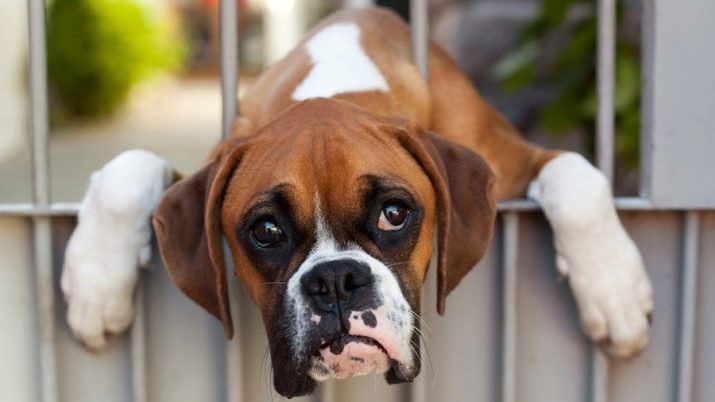
In general, the nature of the breed is balanced. Of the other positive characteristics, it can be called:
- easy learning
- love for children;
- proven security instinct;
- loyalty to the owners.

But a boxer dog can pretty upset the owners:
- hyperactivity in the absence of stress;
- infantilism (the behavior typical of young puppies can last up to 3 years);
- active salivation;
- conflict.
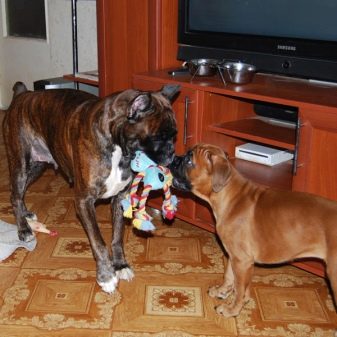
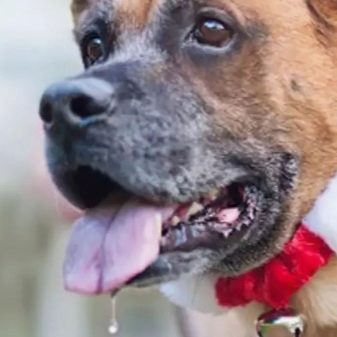
The owners of boxers often note a kind of humor in animals. They make a similar impression with active original games, characteristic facial expressions when executing commands. If the dog is brought up correctly, then in the house she will not commit any tricks. Responsibility with other pets is guaranteed, but conflicts on the street are very likely.
Important: any boxer is always clearly attached to one person. He loves other family members too, but he keeps a great distance. A characteristic feature of the breed is the desire to constantly be closer to the owner, any separation, regardless of the cause, is difficult to tolerate. Boxers are not aggressive towards children, if only they are well trained and safety rules are followed.
However, this is typical of absolutely any dog. It’s easy to train such dogs. But you need to apply only positive incentives - all other methods simply do not work. Attention: any training program should be thought out very carefully. If the pet loses interest in the lessons, he will be stubborn and will cease to fulfill the commands. Forcing him to follow the will of the owners then will be practically impossible.
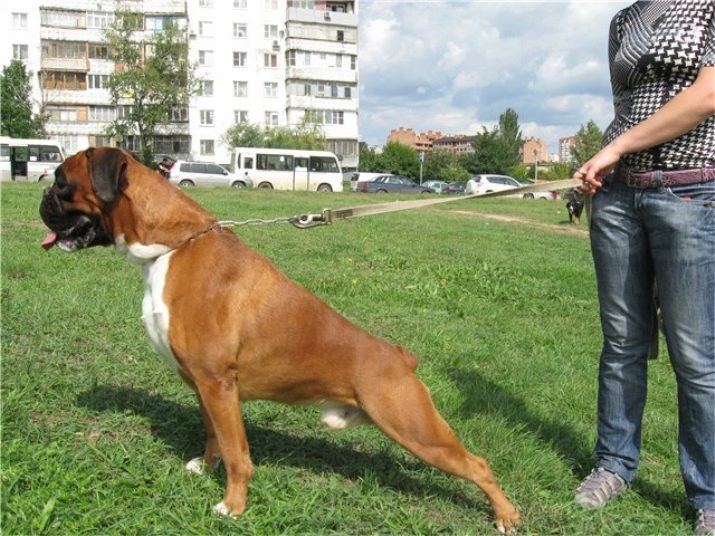
The psyche of a boxer perfectly matches the requirements for a guard dog. By default, he perceives all strangers as suspicious individuals. If you have worked with the animal properly, it will not bark in vain once again, but it is guaranteed to stand up for the owners.Breeders carefully discard cowardly individuals; they act in the same way with too vicious puppies. It is highly recommended that you do not buy boxers anywhere except official nurseries and serious companies.
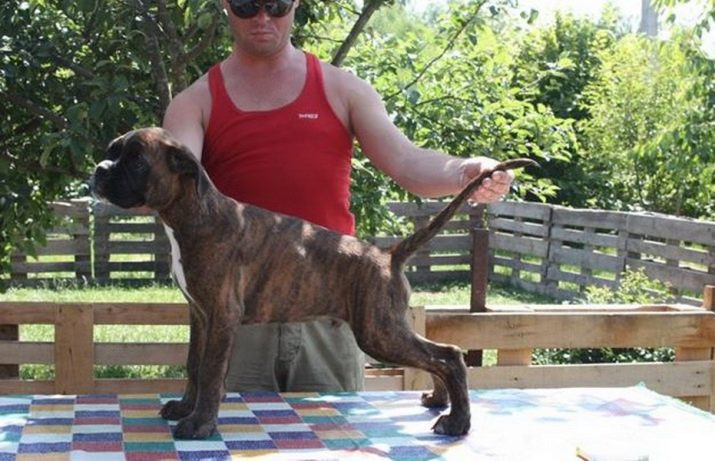
Animals even at the end of a long walk can be actively entertained. If they study the territory, they drive their nose on the ground and puff, like a low-power vacuum cleaner. However, they do not try to go far from the owners. The dog yells at strangers once or twice, warning them. Prolonged flood barking is unusual for this breed. All boxers strangely combine spontaneity and sensitivity.
If they need something, then the desired goal will be achieved not by aggressive behavior, but by charm and emotional attachment. The pet quickly determines which of the pets is more malleable to his tricks, who is more disposed towards him. That's why from the very beginning, it is important to adhere to uniform rules in the treatment of boxers. Those should fully and completely realize that nobody will indulge them in vain.
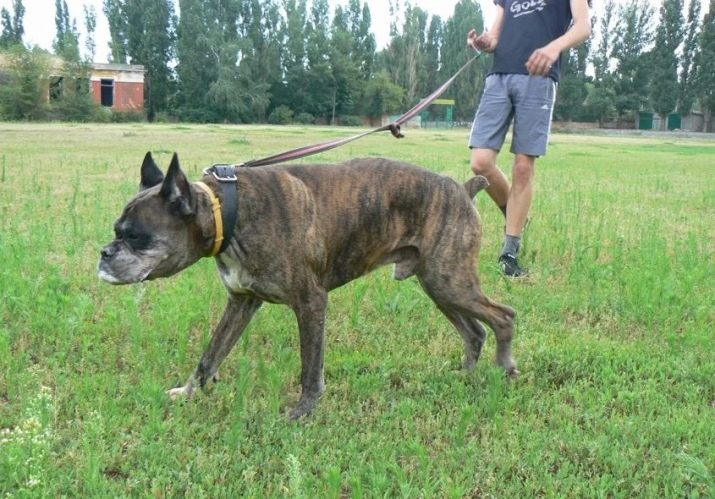
Any representative of the breed is certainly passionate and inclined to struggle. No wonder they talk about "functional instinct." Skirmishes happen selflessly and even with complete pleasure. At an early age, this is a kind of game, and later it becomes harder and fiercer. Sometimes genuine battles erupt.
Important: you can not abuse this way of emotional discharge. Many dogs that were allowed to exercise power too often became prone to fights. And to cope with such a deviation is almost impossible. Some boxers, due to the reaction threshold too low, are ready to enter the fight for almost any reason. A really thoroughbred dog can measure danger and its actions, attacks at full strength only with a real threat.
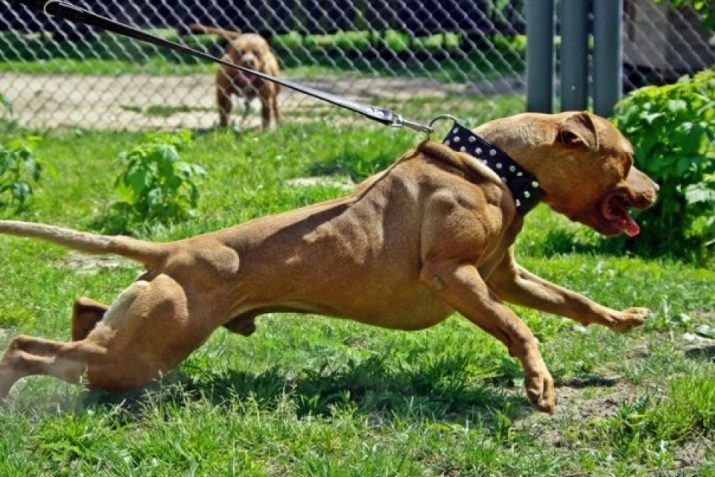
Having discovered the enemy, the boxer will show all his ruthlessness towards him. When playing with children, he seems tireless and eagerly forgives even those actions that cause pain. If the harassment of the kids takes too unpleasant a turn, the dog will not show aggression anyway. She simply goes somewhere else, where she will be left alone.
The combination of power and physical endurance is amazing: any boxer can accompany a cyclist or rider, not lagging behind them.
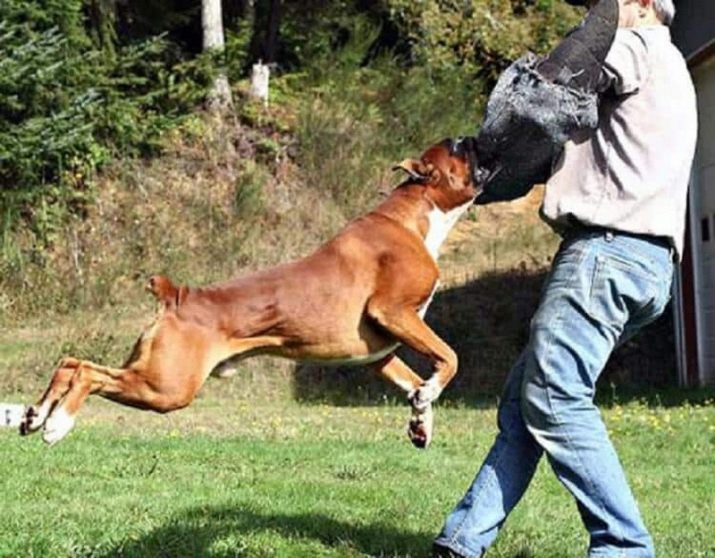
How to name?
Selecting nicknames for boys and girls boxers is equally responsible. It is necessary to remember at the same time about fearlessness, great power and an outstanding mind by the standards of the four-legged. Those names that are suitable for a lap-dog or for a dachshund, in relation to this breed will be perceived, rather, as ridiculous and strange-sounding. Important: as is the case with other dogs, you can not thoughtlessly take names from the pedigrees. There may be arbitrarily long words, but for everyday use you need nicknames shorter. You need to focus on “strong”, “sonorous” names, on words with German roots and on the names of popular movie heroes.
Boys are usually called:
- Fights;
- Caesars;
- Starks;
- Tales;
- Chaseas;
- Bonds;
- Fili;
- In threes.
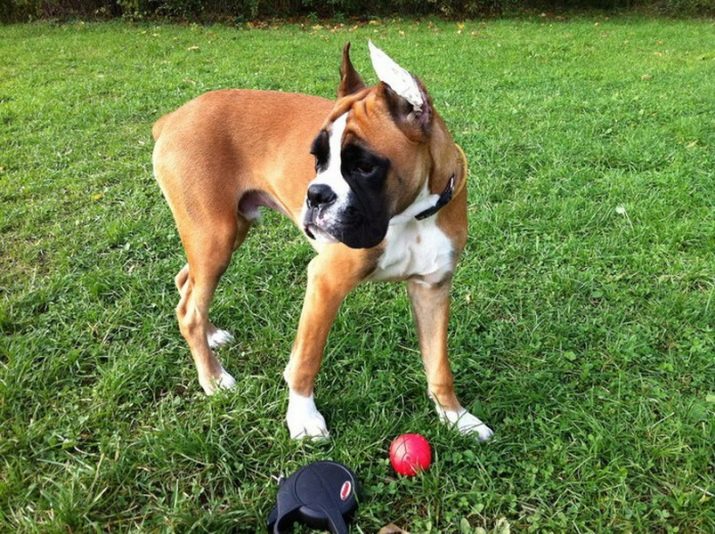
Common names for girls are:
- Emma;
- Lada;
- Linda;
- Mary;
- Alpha;
- Penalties;
- Rika
- Martha.
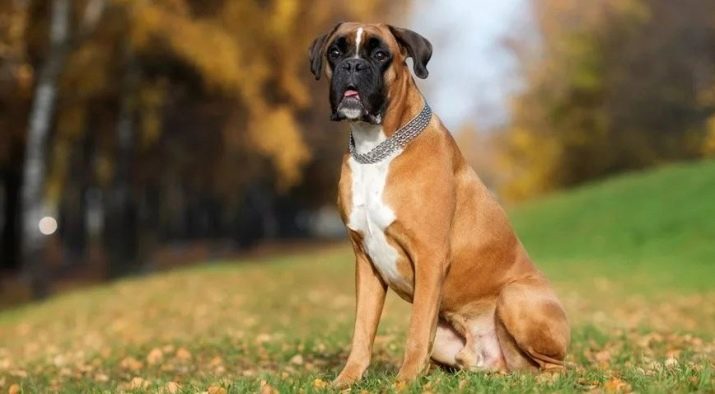
Maintenance and care
Boxers can only be kept in houses and apartments. A street kennel is categorically not for them. Already in mid-autumn, the weather is too cold, especially at night (after all, the coat is short and there is no undercoat under it). For the same reasons, drafts and contact with moisture are of great danger. Because of them, dogs easily catch a cold.
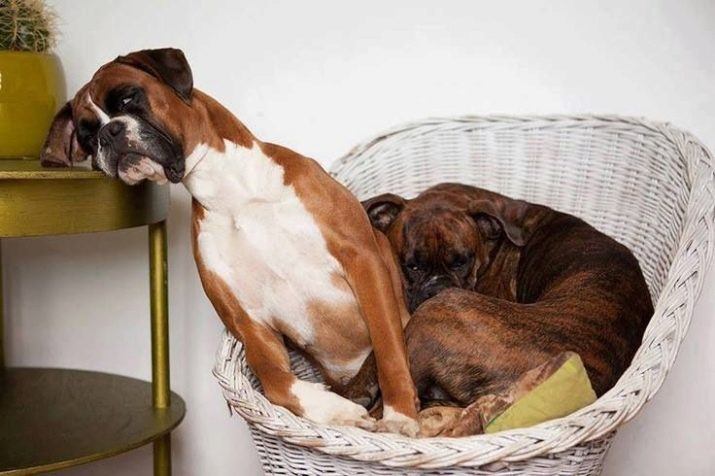
Important: German dogs feel extremely bad in hot days. When they run around the yard all day, you need to help the animals - let them into the house without hindrance. But the content on the chain is strictly contraindicated. The breed is too active, and the forced stay in one place only enhances negative emotions.
Both with a puppy and with an adult boxing dog, you need to walk at least 2-3 times a day and every time at least an hour. And this is not about a simple “passage along the street”. The role of such active entertainment as playing ball, jumping is very important. Preparing for the appearance of a little boxer in the house, you need to provide three critical points:
- the right place for leisure;
- access to toys;
- thoughtful ammunition for walking.
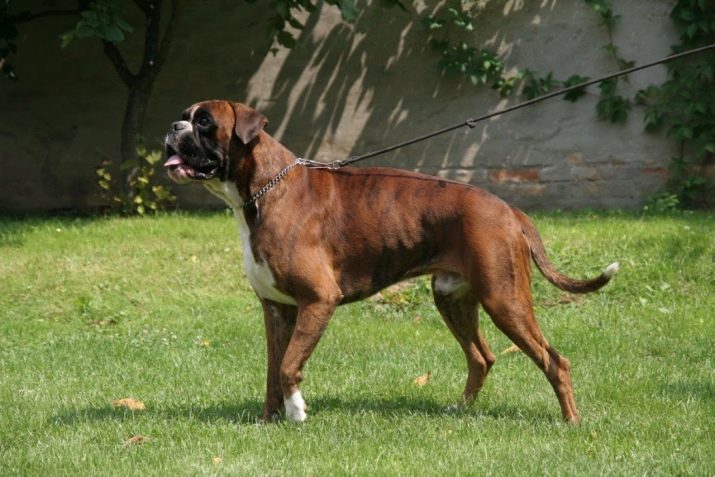
Any boxer, regardless of age, must stably keep the owner in sight. Therefore, he will rest in peace only where there is a good view of the entire room. At the same time, the separation of the resting place from heating devices and the exclusion of drafts are no less important. Caution: Do not use hard, hard or spiky bedding - they should be as soft as possible. Since the dog will grow rapidly, one must always take into account the need to expand the berth.
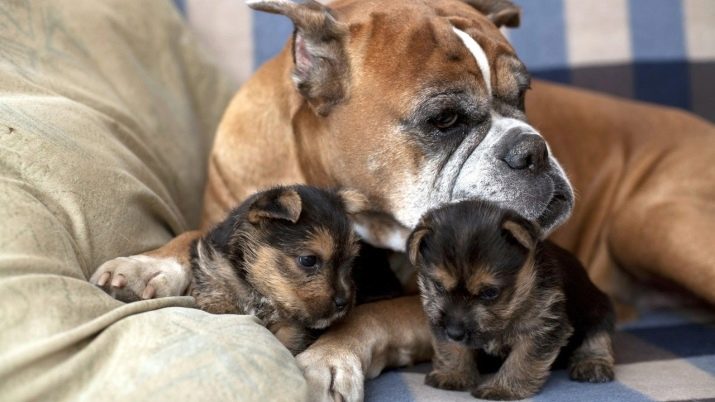
Boxers stand out among other service breeds with increased playfulness. Even adults do not shy away from the entertainment that the hosts offer. Therefore, the selection of toys must be approached responsibly and seriously. Only samples should be taken which the pet is guaranteed not to gnaw or swallow. This requirement is especially relevant when keeping small puppies.
Pets should be trained to wear a collar and walk on a leash as early as possible. If this is started too late, the boxer will perceive such attempts as an encroachment on his freedom. Given the poor thermal properties of wool in this breed, it is imperative to use special clothing for walking. When the heating is turned off in the spring, you will have to wear these vests on the dog and at home.
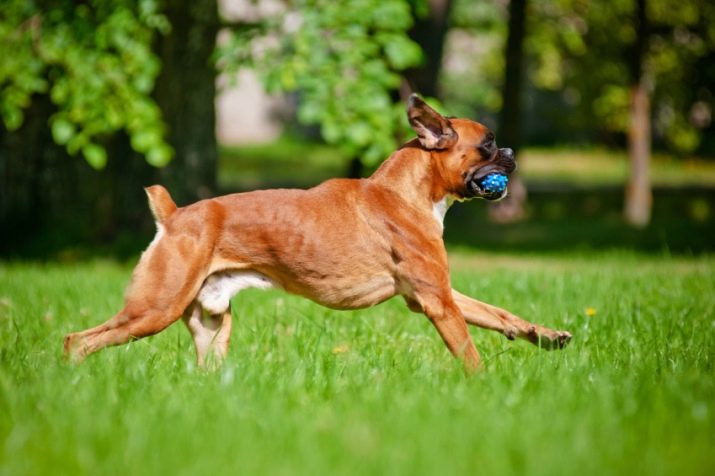
Another important point that should not be overlooked when starting a boxer puppy is the safety of the home for him (and “from him” too). To provide it:
- remove electrical wires and communication cables to inaccessible places;
- remove toxic indoor plants;
- hide shoes and clothes in a safe place;
- care about the safety of wallets, money, phones;
- close all sockets with plugs;
- drugs, sharp and cutting objects, household chemicals, paints, solvents, glass bottles and jars are put away.
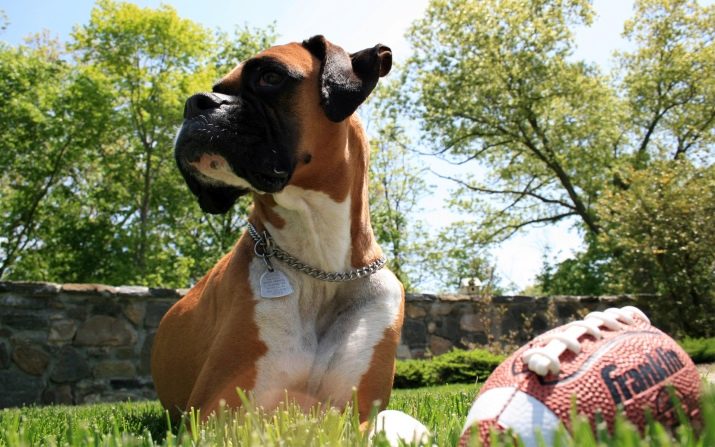
It is unacceptable to put a little boxer where he himself cannot climb or jump. It doesn’t matter what this surface is: a chair or table, chair or bed. At an early age, dogs still have little control over their own movements. Falling even from a small height can lead to very unpleasant consequences. Attention: to leave young pets without supervision for a long time should not be.
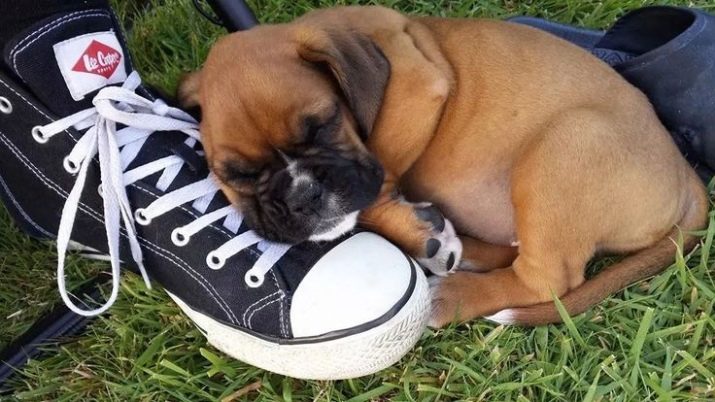
It is the lack of control that provokes them often to all sorts of unpleasant actions. To reduce the danger for household items, it is strongly recommended to buy not only toys, but also special bones that are sold in any pet store. Important: it is strictly forbidden to play with puppies with a rag. Despite their intelligence, they will not be able to understand why a cloth for the game is suitable, but a curtain, jacket or trousers are not.
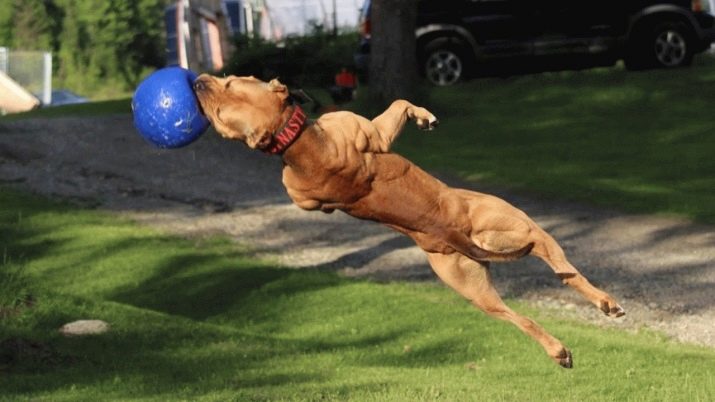
It is strictly forbidden to lift and pull small boxers by the paws. This can lead to injury to joints or ligaments. Normally, puppies should be taken under the chest and behind. Hold them as tight as possible, trying to avoid falls. Puppies should be carefully protected from contact with young children. Those still do not understand well what pain is in other living beings. Therefore, it is recommended that you first take care of continuous monitoring, and only when empathy skills are developed can we slightly weaken it.
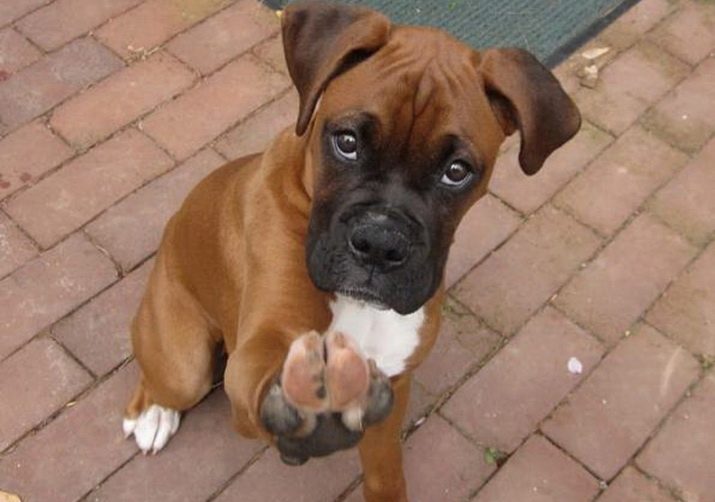
Important: all loose, obviously unstable objects should be removed. If this is not possible, they are strengthened and protected as much as possible.
Small items, such as:
- coins;
- needles
- paper clips;
- pins
- nails, screws, bolts.
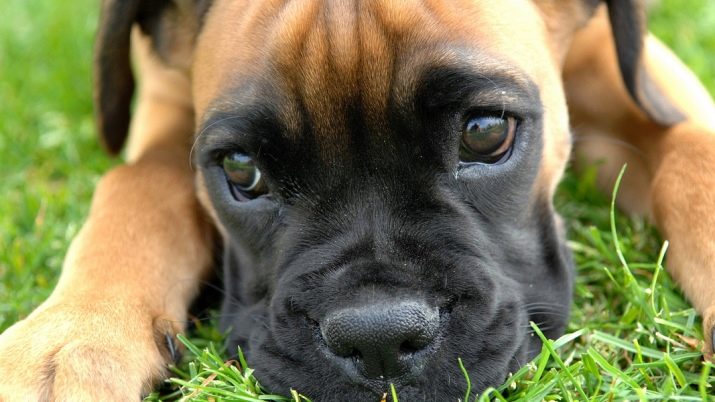
The dog must have its place where it will be located most often.. But until the pet is accustomed to a particular place, he will begin to look for other successful places. It is necessary to take care in advance so that it is impossible to clog into different hard-to-reach slots. It is also important to check the balcony - in many cases it is unsafe. At dachas and in country houses, dogs are protected from getting into the pits, the wells are tightly closed when not in use.
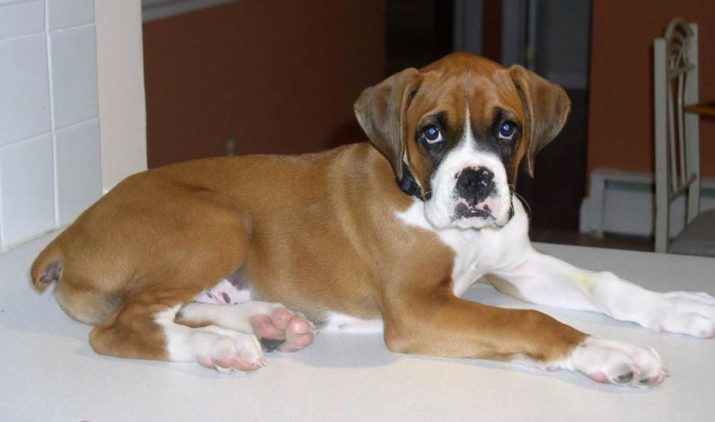
In addition to safety requirements, it is important to consider that there is a monthly table that lists the gain indicators. If there are strong deviations from it, then it is urgent to contact veterinarians. As for swimming, they should not be too frequent. Some experts advise spending a bathing day annually. Shampoos with hypoallergenic properties are then ideal.
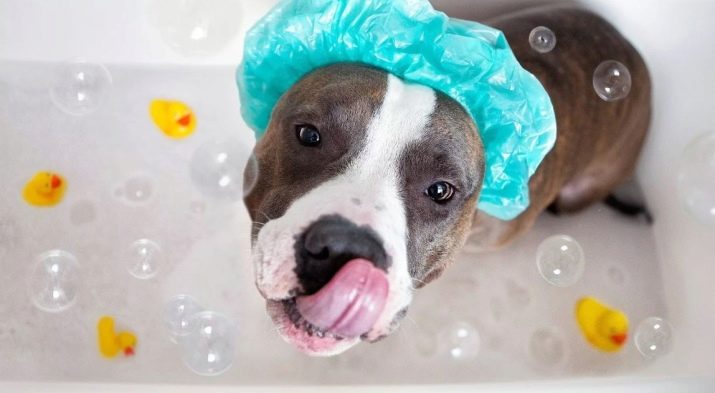
Having bathed a boxer, they immediately wipe it dry. If dirt suddenly appears, it is cleaned with a wet towel, and if desired, with dry shampoo. Once every 7 days, pets are combed with soft brushes. This must be done strictly in the course of the growth of the coat. When it is combed, it is useful to walk on top with a small piece of suede so that the hairs shine. Paws should be washed every time after walking. Be sure to remove dirt that accumulates between the fingers to avoid irritation.
Clipping is done as needed, taking into account the place of walking. But in any case, it is necessary to check the claws at least once every 30 days. Ear cleaning should be done weekly with a tissue.
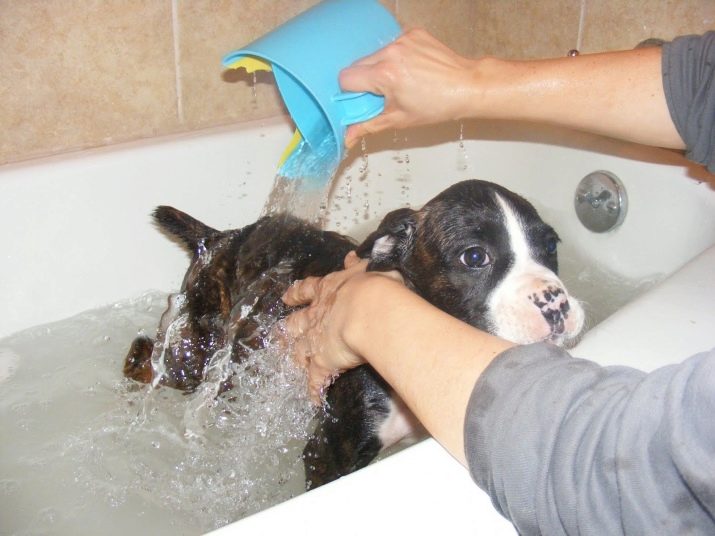
Each month, the ears are washed with special veterinary solutions to avoid infections. If even slight redness appeared or the ears began to smell bad, you need to consult a specialist. Once every 10 days, boxers are required to brush their teeth using special brushes and pastes. Tartar should be removed only by specialists. Once a day, all unnecessary secretions should be removed from the animal’s eyes, moistening a cotton pad in boiled water.

Once a year, you will have to go to the clinic for vaccination on schedule. It is best to combine this event with a routine examination. Once every 3 months, deworming is performed. The treatment of a boxer against fleas is carried out with the frequency that is indicated in the instructions for a particular drug. Particular care should be taken of specific diseases specific to the breed.
Genetic disorders predominantly affect white boxers. However, this does not mean that animals painted according to the standard are not exposed to them at all. Errors in the preparation of the diet and the determination of the diet can disrupt the normal functioning of the gastrointestinal tract. No less often than digestive problems are found:
- deforming spondylosis;
- hip dysplasia;
- eye diseases;
- brachiocephalic syndrome;
- oncological disorders (from 5 years old).
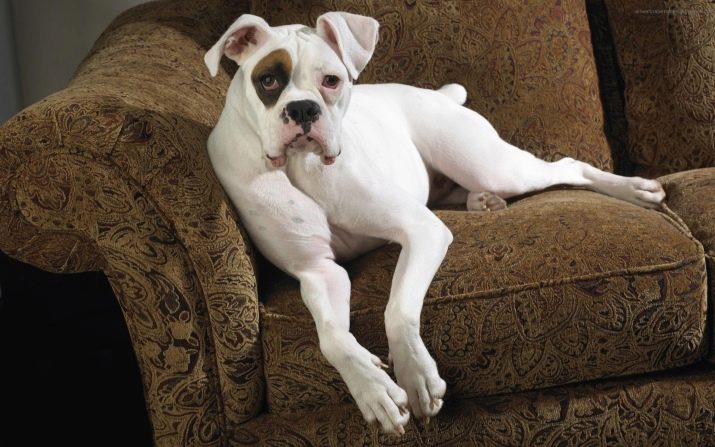
Feeding
Intense debate has been going on for many years, which is better for boxers: factory feed, homemade food, or a combination of both. The final decision must be made by the owners themselves. The main considerations when choosing - ease of use of food and the cost of feed. Categorically it is impossible to save beyond measure. High-quality maintenance of boxers is only possible using premium factory feed or balanced natural food. Balanced homemade food should contain 30-35% of meat. Other volumes comprise:
- dairy products;
- cereals;
- vegetables.

But even the most rigorous diet should include vitamin supplements. Their composition is selected only by professionals. Important: boxers are prone to food allergies, and the body's characteristic reactions proceed violently. Therefore, all new products must be introduced into food gradually and only as necessary. Caution should also be given to food of an unusual formulation, especially from another manufacturer.

The breed standard, as already mentioned, implies an athletic physique. However, the boxer has a fair appetite.With uncontrolled eating, you can face the loss of athletic build. Packages of feed produced at the factory are necessarily marked with the grammar. Servings of natural food should be selected by consultation with veterinarians or with more experienced breeders.
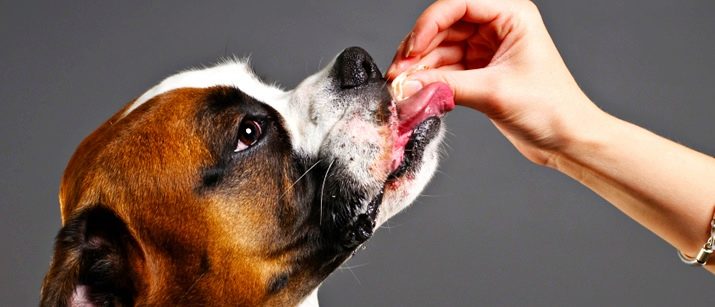
Categorically it is impossible to go on about pets that are prone to begging. No matter what the dog does, it should be protected from food from the human table. A strict ban applies to:
- salty foods;
- dishes with seasonings and spices;
- sweets;
- smoked meat.

But this does not mean that you have to completely abandon the treats of pets. As a good treat, vegetables and fruits are suitable. Water should always be available to the boxer. It is periodically changed. And a few more rules:
- in the first six months, you need to feed the dog 4 times a day;
- in the second half of life - 3 times;
- one-year-old animals are transferred to two meals a day.
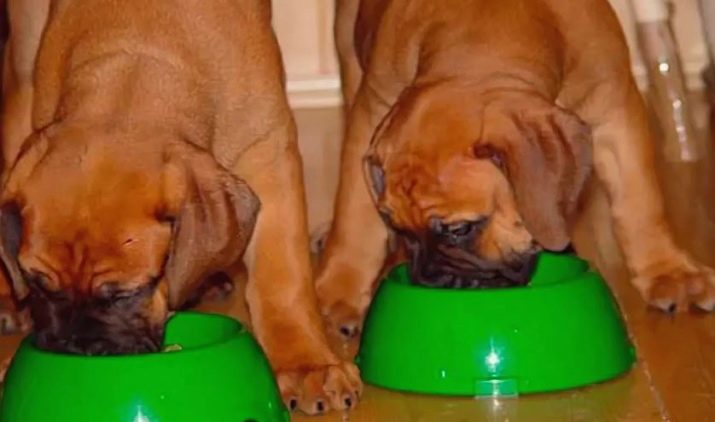
Training
Like any dog, boxers should certainly be trained. The main goals of training are:
- establishing contact between the owner and the animal;
- prevention of conflicts between the pet and family members, other pets;
- increase of security qualities;
- generation of obedience.
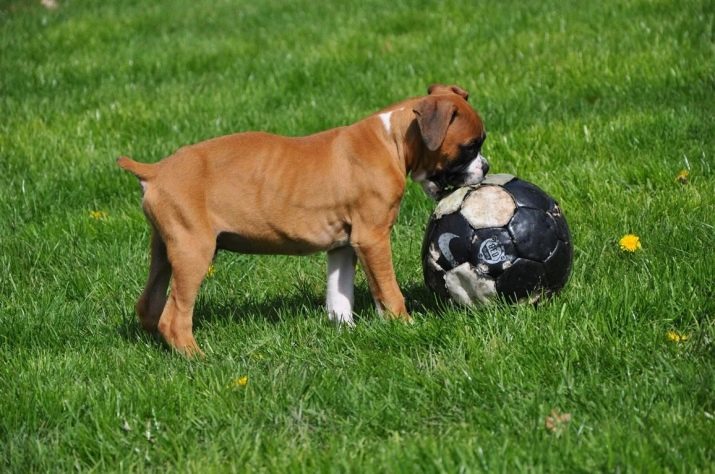
Four-legged guards undergo a special training course, which is primarily aimed at maximizing discipline. As for the exhibition training, it is so complex that the amateur will certainly not understand all these subtleties - you need to contact the professionals as soon as possible. Adult dogs can also be raised, but this will only work if their psychology is taken into account.
As for the development of the simplest obedience skills, everything is simpler here - especially if you have experience dealing with animals.

It must be remembered that until a year and a half the boxer has puppy habits, and they finally disappear only in the fourth year of life. Therefore, you have to think through the workouts carefully. With skillful handling, even the most infantile dog is raised successfully. You will have to start training with the simplest teams. It is necessary to behave with pets firmly, but in no case resorting to cruelties.

Until the animal complies with the order, training must continue relentlessly. Allowing once to evade the fulfillment of the will of the owner, to achieve obedience in the future will be difficult. The very first order that is important to learn is "To me." When mastering it, food stimuli must be used. Categorically it is impossible to shout at a dog, let alone beat it.
Violence of any kind leads to aggressiveness or cowardice. The most important property of a skilled trainer is the ability to act consistently. Sometimes for a long time it may seem that there is no result. However, after some time, the skills will still appear. Important: even if the pet shows impressive success, it must be trained diligently. If a persistent reflex is not developed, not properly supported skills will gradually disappear.
It is worth remembering that classes should be interesting for the animal. When such a requirement is met, it will look forward to the next training itself. All teams must work out in different places to exclude too stereotyped behavior. The development of various skills will certainly alternate with games, and intelligence training with manifestations of physical activity.
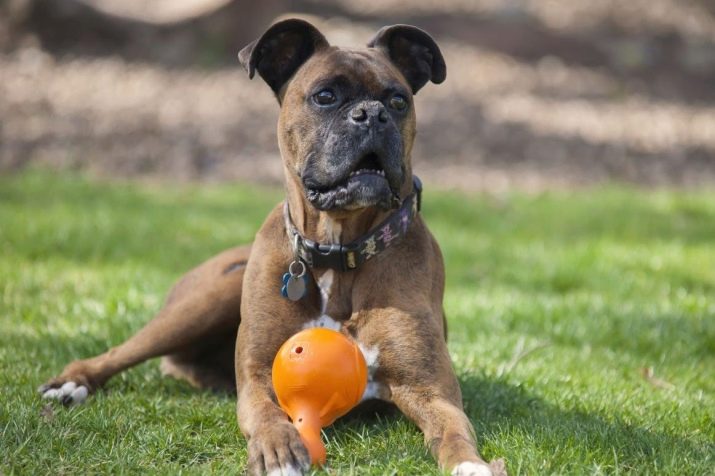
Since the boxer often “finds out relationships” with other dogs, an early point in training is early socialization. It is expressed in:
- calm interaction with other dogs;
- cold-blooded reaction to cats;
- constant orientation on the owner and immediate execution of his commands.

Until the dog is fully trained, you must not let it go from the leash:
- in crowded places;
- in places where children play or often visit;
- in parks and squares;
- in the vicinity of busy highways;
- close to the railway;
- in marshy and swampy terrain;
- in the forest and in the country.
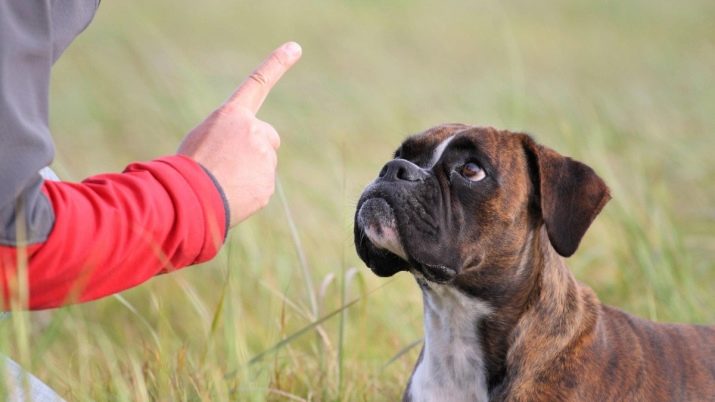
Reviews
According to most owners of boxers, their pets easily master teams and even various tricks. Many are able to subtly recognize people's emotions and properly respond to their needs. Care is not too complicated. Boxers go swimming calmly, even enjoy the process. With the children of the owners establish contact without problems and to strangers, whether it be dogs or people, do not allow to touch.
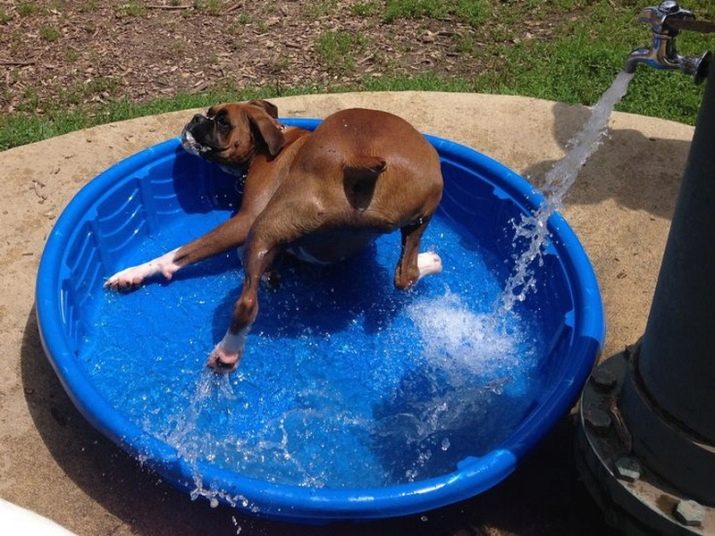
On a walk, the pet is usually calm, ignores strangers by default. But if they provoke him, show aggression or behave somehow suspiciously, then the consequences can be unpredictable. Attitude to other dogs (of any breed) borders on jealousy. Cats are usually perceived as an element of the surrounding landscape.
Other reviews say:
- boxers loyalty;
- their cheerful disposition;
- lively and tactful behavior;
- sensitivity to children (bites are only imitated).

The consequences of the lack of training or its incorrect conduct can be detrimental. Then the animals begin to behave disobediently, they can smash everything in a row in the house. It is highly undesirable to leave them alone for many hours. If guests come, ill-bred pets can jump, bark and in other ways attract attention.
Important: before buying a boxer, you need to carefully study the information about him, familiarize yourself with the pedigree. Inexperienced dog breeders should prefer another dog. If you come across an instance with character, you can achieve normal behavior, but it is possible to do this with difficulty and far from immediately. Another caveat - boxers are extremely negative about drunk people and those who make too much noise. And it is also worth remembering that all owners are advised to buy boxers exclusively in trusted nurseries.

With the right choice and proper approach, a dog of this breed will delight everyone. It treats all the residents of the house favorably (of course, if they themselves do not make any mistakes). But you need to understand that people, especially children, become very attached to boxers. And therefore, the loss inevitable over time can be emotionally difficult. However, the same is true for any dogs in principle.
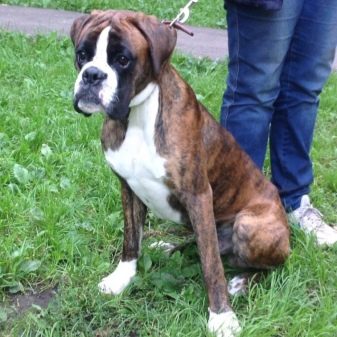

Experienced owners of boxers give a number of recommendations that make it easier to keep dogs. In pedigree animals, the paw pads are very often deformed. They should be examined after each walk in search of cuts and abrasions. Early disinfection of paws before a walk is very important for puppies and old individuals. Both at the next and extraordinary bathing use only warm water.
Its maximum temperature is 32 degrees. Experts do not advise unnecessarily delaying water procedures. The area of the apartment does not matter much, the boxer is well placed in a modest room. Positive results in training can be achieved even by adolescents 12 years of age and older.
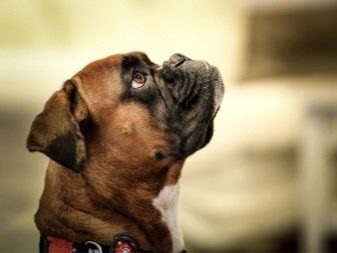
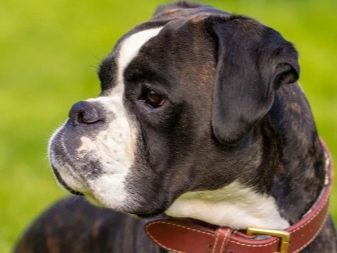
See how to properly train a boxer dog breed in the next video.
